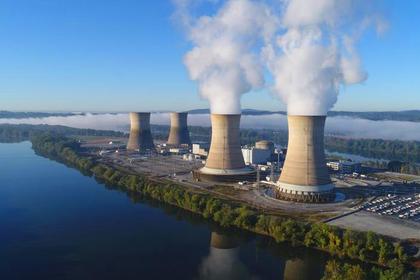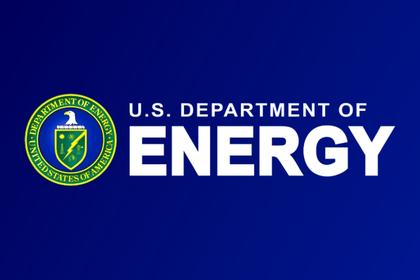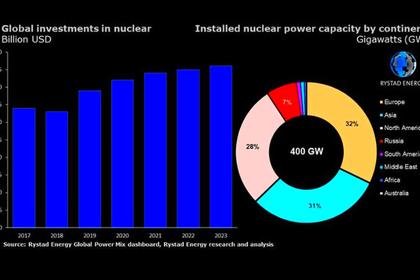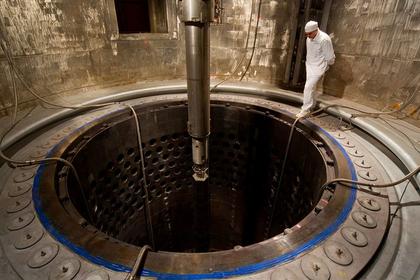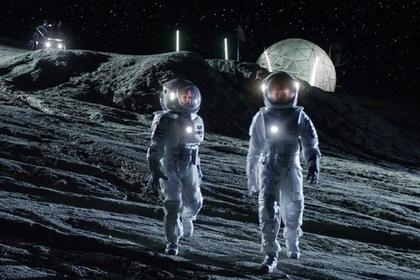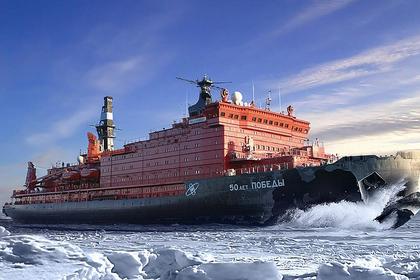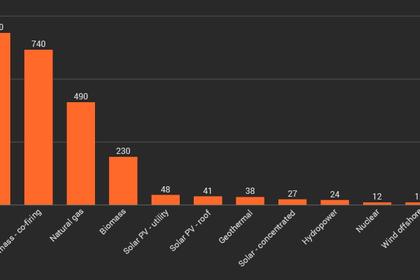
U.S., RUSSIAN NUCLEAR SECRET
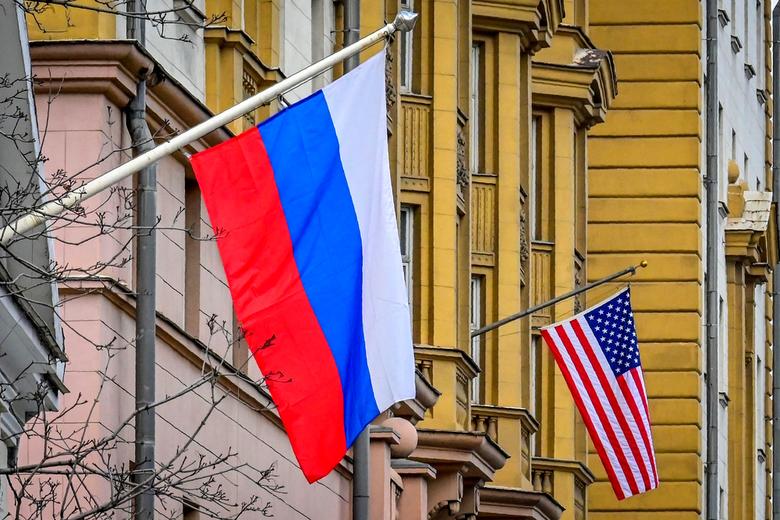
N - 21 April 2023 - The US has sensitive nuclear technology at a nuclear power plant inside Ukraine and is warning Russia not to touch it, according to a letter the US Department of Energy (DOE) sent to Rosatom, CNN reported. The letter, from the director of DOE’s Office of Nonproliferation Policy, Andrea Ferkile, was dated 17 March 2023. It tells Rosatom’s director general that the Zaporizhia nuclear power plant in Enerhodar “contains US-origin nuclear technical data that is export-controlled by the United States Government”.
Since Russia took control of ZNPP in March 2022, the Russian national guard has been protecting the station and in October, Russian President Vladimir Putin signed a decree formally transferring ZNPP to Russian jurisdiction under nuclear utility Rosenergoatom (part of Rosatom). A Russian Federal State Unitary Enterprise. Zaporizhia NPP was established by Rosenergoatom to operate the plant. ZNPP has been subjected to repeated shelling and drone attacks as well as several major military operations by Ukrainian forces to take back control of the facility.
The DOE letter says: “It is unlawful under United States law for non-authorised persons, including, but not limited to, Russian citizens and Russian entities, such as Rosatom and its subsidiaries, to knowingly and wilfully access, possess, control, export, store, seize, review, re-export, ship, transfer, copy, manipulate such technology or technical data, or direct, or authorise others to do the same, without such Russian entities becoming authorised recipients by the Secretary of the US Department of Energy.”
It is not clear whether Rosatom has responded to the letter. “The Department of Energy’s National Nuclear Security Administration can confirm that the letter is legitimate,” said Shayela Hassan, the deputy director of public affairs for the National Nuclear Security Administration. She added: “The Secretary of Energy has the statutory responsibility for authorising the transfer of unclassified civilian nuclear technology and assistance to foreign atomic energy activities. DOE does not comment on regulatory activities.”
Another letter from Ferkile to the Energy Department’s Inspector General, reviewed by CNN and dated 24 October 24 2022, outlines the technology the US has exported to Ukraine for use ZNPP and reiterates that the department has “no record of any current authorisation to transfer this technology and technical data to any Russian national or entity”. DOE’s Office of Nuclear Energy stated on its website in June 2021 that “the United States helped implement new maintenance procedures and operations at the reactor that should ultimately strengthen energy security” in Ukraine.
US technologies at ZNPP largely concern Westinghouse-supplied nuclear fuel, a used fuel dry storage facility built by Holtec and software related to operation of the six units, none of which is of any interest to Rosatom, according to the large number of Russian scientists and nuclear experts who commented on the DOE letter.
All of Ukraine’s nuclear facilities are based on Soviet and Russian technology and its NPPs originally depended on nuclear fuel supplied by TVEL, which was taken back to Russia for reprocessing. However, nuclear utility Energoatom, encouraged by the US, began a fuel diversification policy and began implementing the Ukraine Nuclear Fuel Qualification Project (UNFQP) for VVER-1000 fuel. The Project assumed the use of Western-manufactured fuel in VVER-1000 reactors with Westinghouse selected as vendor.
In 2005, South Ukraine's third unit was the country's first to use the six lead test assemblies supplied by Westinghouse placed into the reactor core together with Russian fuel for a period of pilot operation. A reload batch of 42 fuel assemblies was provided by Westinghouse in mid-2009 for a three-year period. Under a 2008 contract, Westinghouse supplied a total of 630 fuel assemblies for South Ukraine 2&3. However, the fuel caused serious damage to one of the reactors and in 2010 Energoatom signed a long-term fuel supply contract with TVEL for all 15 reactors. Westinghouse fuel had earlier also caused problems at the Loviisa NPP in Finland and the Temelin NPP in the Czech Republic.
Following the annexation of Crimea by Russia, in 2014, Ukraine again turned to the US and extended its 2008 contract with Westinghouse for fuel supply to 2020. In 2015 Energoatom ordered Westinghouse fuel for ZNPP unit 5 as well as for South Ukraine. Despite continued warnings from Russia about the safety of the Westinghouse fuel, by 2021, six of Ukraine's 15 reactors were using it: South Ukraine 2&3 and four units at ZNPP. Because Westinghouse, unlike TVEL, does not take back the used fuel, Ukraine contracted US Holtec to build a a long-term dry storage facility for used fuel at ZNPP, which has operated since 2001.
Commenting on the DOE letter, there is a general consensus among Russian experts that there are really no critical US technologies at ZNPP that are of any use to Rosatom. According to nuclear energy expert Alexey Anpilogov, President of the Foundation for Support of Scientific Research and Development of Civil Initiatives Research: "There are two main points that distinguished the four Ukrainian NPPs from the Russian ones, they are the Westinghouse alternative nuclear fuel (TVS-W) and the dry storage of used raw materials, which was built by Holtec in Energodar. Everything else works on Soviet technologies.”
He added that, when the US began adapting Ukrainian NPPs to enable their use of Westinghouse fuel in 2008 nuclear fuel, Rosatom withdrew its guarantees for those plant. The decision was not political, he explains, noting that the use of US fuel assemblies in Soviet reactors at the Finnish Loviisa NPP had revealed the shortcomings and that their use in Ukraine confirmed those concerns. “After the arrival of Westinghouse, Ukraine operated ZNPP at its own risk. Practice has shown that TVS-W fuel is less reliable than Russian fuel elements, and it is questionable from an economic point of view,” he said.
He noted that Westinghouse fuel for VVER reactors is not a 100% copy of TVEL’s fuel. “They have a certain share of their own experience. But by God, it would be better to have a full copy… everyone who tried to use Westinghouse assemblies encountered huge problems.” Citing the fuel deformations that occurred in Loviisa, Temelin and South Ukraine, he said: “So, whether the Americans want it or not, we will touch their fuel. Because there is no choice. These dangerous assemblies have to be removed from the plant."
He noted that the fuel “operates with a longer cycle between refuellings, which is achieved with increased enrichment.” This also makes TVS-W more expensive than Russian fuel. He added that the need to build used fuel storage facilities at ZNPP had also increased costs. “Rosatom includes disposal in the cost of nuclear fuel supply. Working with the United States has increased Ukraine's costs and reduced the safety of its nuclear industry," Anpilogov concluded. “But the choice of American fuel, rather than Russian, was always dictated by political reasons," he asserted. "The technologies that the Americans left behind at ZNPP have no sensitive significance for Rosatom. The station's equipment can be quickly returned to factory settings."
Nuclear scientist Alexander Uvarov, Director of AtomInfo-Centre, confirmed that: “There are no secrets or special technologies at ZNPP, but there may be commercial secrets." This may relate to software, he explained. He said the US has been writing letters since last year saying that in accordance with agreements, this American software should not be touched. “It's just that CNN has only just noticed it. And, apparently, for a reason,” he said. “A number of countries are now pushing the European Union to impose the toughest possible sanctions against Rosatom and its subsidiaries,” he noted.
He said the supplied software is mainly engineering programs designed for the operation of specific power units of the plant. This includes RELAP simulation software and neutronics codes that have been adapted to the needs of Westinghouse. “And let's be honest: in most cases, RELAP is not even used by professionals anymore”. He explained that “These engineering programs are of no scientific or technical interest to us…. We have our own calculation complexes, and in a fairly large number. After all, the VVER-1000s at ZNPP are our reactors.” He added: “If I were a student, I would still look through their documentation out of curiosity, but no one will take it seriously. But to give this event more weight, CNN and called it ‘nuclear technical data of American origin’.
Currently VNPP unit 1,3,4 & 5 use Westinghouse fuel and reserves will last for four years. However, it is planned to replace it completely with Russian fuel, Renat Karchaa, adviser to the Director of Russian nuclear utility Rosenergoatom Concern, told Interfax. "Theoretically, the current reserves of American fuel are for about four years. But its replacement with the Russian fuel will begin much earlier. We don't need American fuel, nor do we need their technologies. We have our own regulations,” he said.
Alexey Anpilogov told VZGLYAD newspaper that the DOE letter could be a pretext for imposing sanctions on Rosatom. "Everyone understands perfectly well that the ZNPP will remain under Russian control, it is impossible to remove the power units and American technologies, so the United States is creating a media hype. Perhaps in the future, Washington will initiate lawsuits against Rosatom for allegedly disclosing secret technologies or lost profits.” He commented: “American companies have lost a lot of key positions in the nuclear production market and lost a number of tenders to Rosatom. Naturally, in most cases we are not talking about the European continent, where we are now banned, but about Africa and Asia."
Maxim Shingarkin, ecologist and former Russian Duma member, said: “The Russian Federation can throw this [DOE] letter in the trash, and not inform anyone about what is happening at the nuclear facility, which is the property of the Russian Federation. We have to unload the dangerous fuel. If the Americans come and take it away along with the used nuclear fuel, it will be just fine. We will only welcome it if the Americans take home their dangerous materials.”
-----
Earlier:
